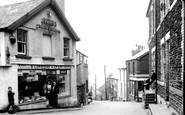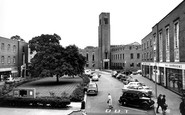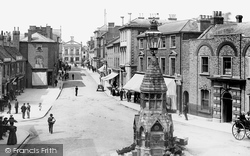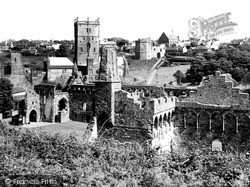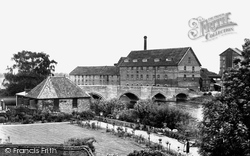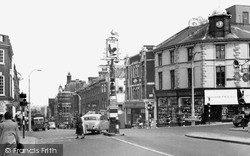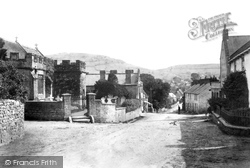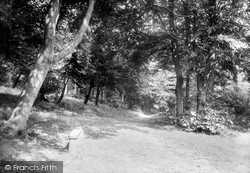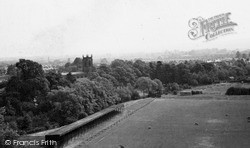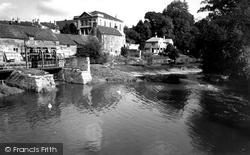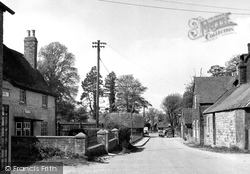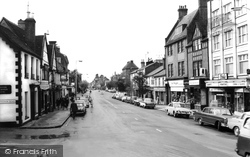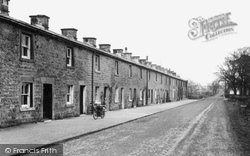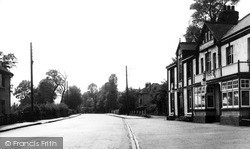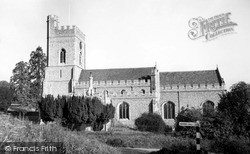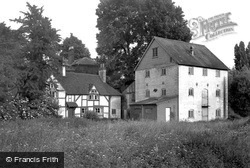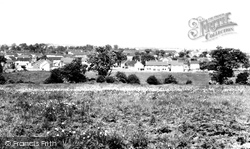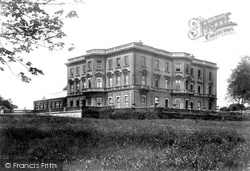Places
6 places found.
Those places high-lighted have photos. All locations may have maps, books and memories.
Photos
11 photos found. Showing results 101 to 11.
Maps
45 maps found.
Books
Sorry, no books were found that related to your search.
Memories
251 memories found. Showing results 51 to 60.
A Yokels Tale
A Personal Recollection of growing up during the last days of the pedestrian era in rural England by Tom Thornton A Yokel's Tale My earliest recollection of my Thornton grandparents, Alice and Tom, dates back to my pre-school ...Read more
A memory of Owslebury in 1941 by
Family Picnics In 1950s
In the 1950s my family made regular summer trips to a scenic and elevated spot somewhere in the general area of Aylesbury for family picnics. I have a few b&w snaps - one of which shows a road wide enough for two ...Read more
A memory of Aylesbury in 1955 by
Childhood Memories
My father, Bertram Whittingham was a native of Hemsworth, born 1892 and I am the remaining son of the family born August 1926 in a small miner's cottage located at No. 7 North View. My father was a coal miner, working at ...Read more
A memory of Hemsworth in 1930 by
The Original Grove Hotel In Stapenhill
When I was about 4 years old in 1948 my Auntie Jess and Uncle Albert (Haynes) ran the Grove Hotel at Stapenhill. It was the original one, not the one which is there now. It was a really lovely old ...Read more
A memory of Stapenhill in 1948 by
Evacuated To Great West Farm
My mother Eileen and her brother Ian Carter were evacuated to Great West Farm, Quethiock in 1940. Here are her memories of that time:- On June 16th 1940 we were evacuated from Marvels Lane School, Grove Park, London ...Read more
A memory of Quethiock by
School Days And Beyond
Having just stumbled on this website I felt compelled to add my recollections of living in Fenham in Cheeseburn Gardens from circa 1961 to 1980. I lived 2 streets down the hill from the first contributor who lived in Ovington ...Read more
A memory of Fenham by
1 A High Street, Garndiffiath
My name is Robert Gwillim, I lived at 1A High Street with my parents Edward & Betty from when I was born in 1955 until April 1962. My sister, Carol, was born in December 1961. My parents had lived at 1A High ...Read more
A memory of Garndiffaith in 1960 by
Hornsey
I was born in Hornsey in 1940. Returning from evacuation in S.Wales in 1944, I went to Highgate Primary School for a short time, before moving to 141 Crouch Hill (now demolished) and attending Rokesley Infants School & Crouch End ...Read more
A memory of Hornsey in 1945 by
Lound School
I remember walking up (what seemed like then) the long steep hill every morning to go to Lound School... apparently the old one..with the stone walls around it, and the Vicors house across the road. There used to be ...Read more
A memory of Chapeltown by
Ann Street Memories
Having been born in Ann Street in 1962, my memories of the surrounding area are quite vivid, including Waddles Foundry; the metal beating from the works would often wake me in the morning. It was on land just behind the Bull ...Read more
A memory of Llanelli in 1969 by
Captions
154 captions found. Showing results 121 to 144.
Carter and cart-horse head up Main Street in a view across to the plateau of Langdon Hill (centre). Behind them is the gable- end of the Farmery and Hope Cottage.
Viewed from the Corn Exchange on Market Hill, Luton's main street on a summer's day just before the turn of the 19th century gives little indication of the importance of this thoroughfare.
This ancient town crowns the steep hill above the valley of the River Kensey. Here we see the broad market place, with its pleasing facades of 17th- and 18th-century slate-roofed buildings.
'When the evening sun falls over St Davids Cathedral, gilding the old stone, shining on the gentle green hills, the white twisting roads and the little farms, the smallest “city” in the kingdom lies lost
Around 1855, Charles Veasey built a steam-powered mill manufacturing linseed oil and cattle cake.
Further down the hill, on the corner of Throwley Road, the cupola surmounting the Municipal Offices rises above the surrounding buildings. Beyond is the white stone frontage of the Gaumont Cinema.
This picture looks eastwards down Main Street to Quarry Hill (left) and Eype Down (right).
At the foot of Langho Fells and in sight of Pendle Hill stands the Saxon village of Old Langho; its church, St Leonard's, was built with stone that came from Whalley Abbey in about 1530.
Good views can be had of the town from the top of Corbar Hill and of the moorland to the north over Lightwood Reservoir.
This reflects its prominent position on the crown of a hill and at the junction of Upper High Street and High Street.
An ancient village recorded in the Domesday Book as Penictune, it has a stream flowing through it like Downham has, and it also lies at the foot of Pendle Hill.
Towards the north-west lies the mound of Beacon Hill. The earliest origins of Loughborough may be here.
The year 1907 is carved in the stone, but this picture was taken the following year when the school opened for 200 secondary age boys and girls.
Rising on Lamb Hill Fell, the river now runs into the Stock Reservoir and then resumes its wandering in North Lancashire.
The buildings behind were attached to the rear of the mill and also contained stabling.
The road to Swindon from Beckhampton pass- es through Avebury village and the Neolithic stone circle and henge (bank and ditch).
as to make it easier to carry away stone from the castle.
The name Corless is associated with the family who lived at Springfield House, Pilling.
Whenever a problem existed they would often pool their resources, with whole families working together to provide such things as footpaths or stepping-stones on the unmade roads.
There has been a church at Watton at Stone since the 13th century. It was originally dedicated to St Mary, but St Andrew seems to have been added in the early 19th century.
Just past the Stepping Stones public house is one of the roads leading to Polesden Lacy.
BASILDON is a New Town, yet it has seen more changes over the past 60 decades than most places in Britain - and it has a history that will fascinate most of its present inhabitants.
The Congregationalists had already built their stone-fronted church in London Road with its twin Norman-style towers in 1850, designed by Charles Searle.
On the top of Ashcombe Hill (now Ranmore Hill) there was a farm; here, perhaps, John Denby lived, a one-time farmer who was referred to at a Court Baron held in 1555.
Places (6)
Photos (11)
Memories (251)
Books (0)
Maps (45)

